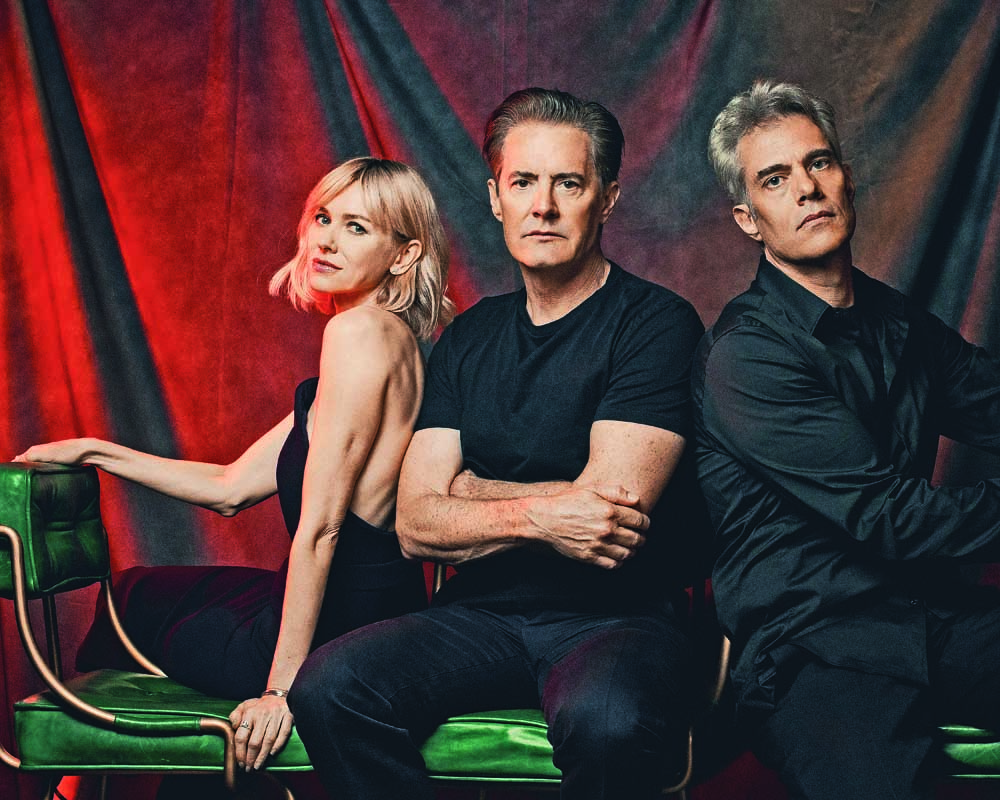‘Thrones,’ ‘Peaks’ a contrast in pacing
Published 4:50 pm Monday, August 28, 2017

- Naomi Watts, from left, Kyle MacLachlan and Dana Ashbrook appear in the upcoming revival of “Twin Peaks.”(Ryan Pfluger/The New York Times)
Seventeen seconds. That, give or take, is how much time goes by from the opening title sequence of “Twin Peaks: The Return” to the first bass note of Angelo Badalamenti’s theme song.
Before that, you wait: an eerie hum, a corona of light amid the clouds, the slow fade-in of the late Laura Palmer’s portrait, a view of trees.
Trending
Seventeen seconds is also, or so it seemed, about how long it took in the most recent “Game of Thrones” for a raven to wing it from the Wall to Daenerys Targaryen and for the mother of dragons to make the return trip from her castle with a fire-breathing cavalry.
HBO and Showtime’s dramas have made curious schedule-mates on summer Sundays. They’re dual examples of the ambitions of cable TV today and of the wildly different directions those ambitions can take: big-ticket spectacle vs. art-house dreamscape, geopolitical battles vs. spirit warfare, dragons vs. demons.
They also draw markedly different crowds. HBO’s “Game of Thrones” set records this season at over 10 million viewers for its first airing; Showtime’s “Twin Peaks” premieres draw well under a million.
But their biggest difference is the tempo. “Twin Peaks” is as narcotically slow as “Game of Thrones” has become hellbent and relentless. Watching one after the other is like stepping off a drifting log onto a speedboat.
The opening sequence of “Twin Peaks,” which airs first on Sundays, is a kind of yogic resetting. Before you watch, the show seems to be telling you, “you need to breathe deeply and slow your heart rate. Leave your phone in the basket by the door; light a candle.” Even in the early 1990s, a slower era of television, the original “Twin Peaks” was deliberate, holding pauses and transitions — like a traffic light swaying over an intersection — to test and shatter the rhythms of ad-based TV.
“The Return,” with 18 episodes and no commercial breaks, has tested those boundaries — and viewer patience — even further. Scenes have extended long past the expected cutaway point, as when a bar employee swept a floor — and swept and swept — for two and a half minutes. The spectacular eighth episode featured a slowly unfolding sound and light show, with primal evils emerging into the world from the inferno of the first nuclear explosion. Badalamenti’s score often takes a back seat to David Lynch’s white-noise sound design, of electric hums and drones, a soundtrack of suspension and waiting.
Trending
The central performance’s metabolism has downshifted. The chipper Dale Cooper, after a quarter-century in mystical limbo, has re-emerged as Dougie Jones, who moves by shuffling his feet and speaks by repeating the last words anyone speaks to him — he’s a canyon, forcing you to wait for each echo.
What’s the point of this wax-on, wax-off test of the viewer’s focus? It feels like Lynch and his co-creator, Mark Frost, are using the pace of the new “Twin Peaks” to induce the mind-set it takes to absorb the new “Twin Peaks.”
The series does not often make literal sense, and I don’t expect it to make much more when it ends on Sept. 3. What it does — wondrously and terrifyingly — is recreate the experience of dreaming. Think of the nightmares where you run in slow-motion while something chases you: Dreams are where time moves strangely.
“Game of Thrones,” whose seventh season ends Sunday, is at the other end of the metronome. But it’s been a process of gradual acceleration. Its early seasons rolled slowly, establishing character, politics and geography on two continents, letting relationships evolve on the long, chatty course from Point A to Point B.
Now, with the endgame underway, its pace has become urgent, even frenzied. Episodes cram in so many long-awaited meetings and reunions they play like a reality-TV postseason special.
The Great Westeros Sprint began in earnest last season, when the showrunners, David Benioff and D.B. Weiss overtook the plot of the George R.R. Martin novels.
There have been benefits. The early “Game of Thrones” seasons tended to forget a rule of economical storytelling: To get someone into a castle, you don’t have to show them crossing the drawbridge.
The new double-time “Thrones” relies more on spectacle, less on conversation. Sometimes, this is powerful. The aerial immolation of the Lannister army this season presented a confrontation fans had long hoped for, a Godzilla-vs.-Bambi mismatch that was equal parts breathtaking and horrifying.
It’s tempting to frame the difference between “Thrones” and “Peaks” as a prestige-TV battle royal, action for the masses vs. art for the contemplative. I’d rather see it as proof that TV can take very different forms, to serve very different goals.
“Game of Thrones” speeds up time, to give you the world in 60 minutes. “Twin Peaks” slows it down, to show you the universe in the nucleus of an atom.








